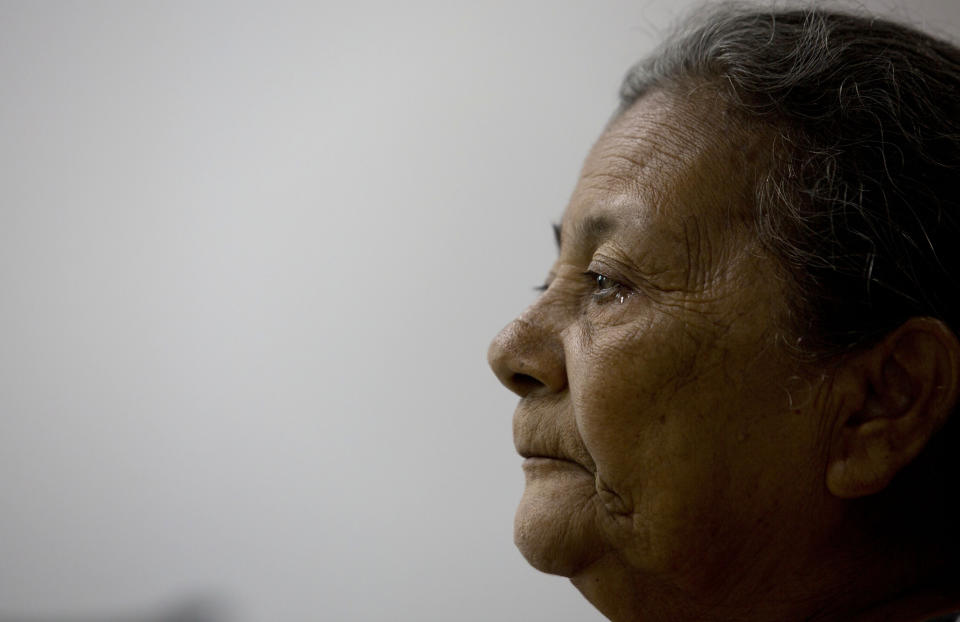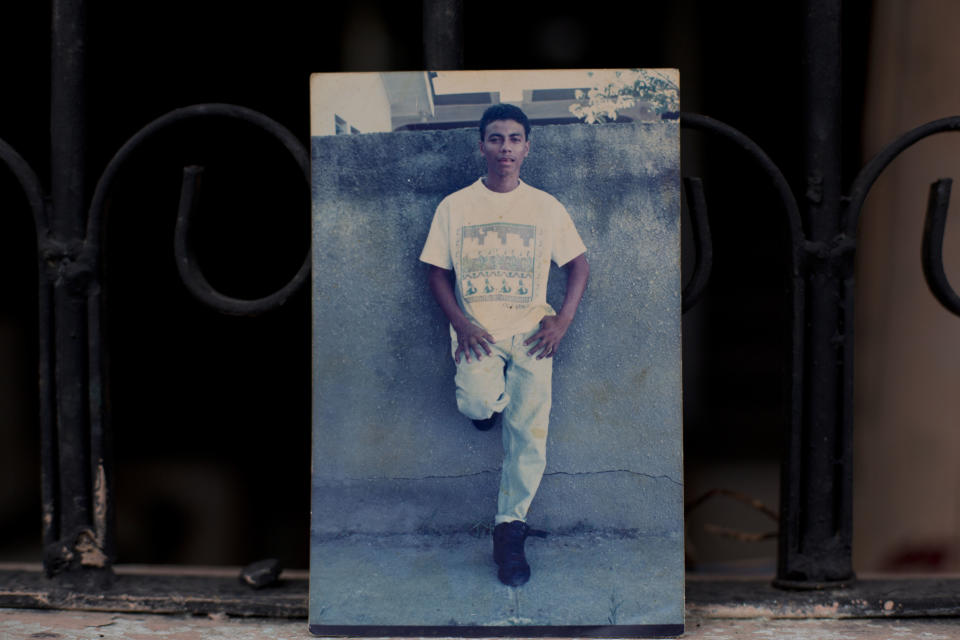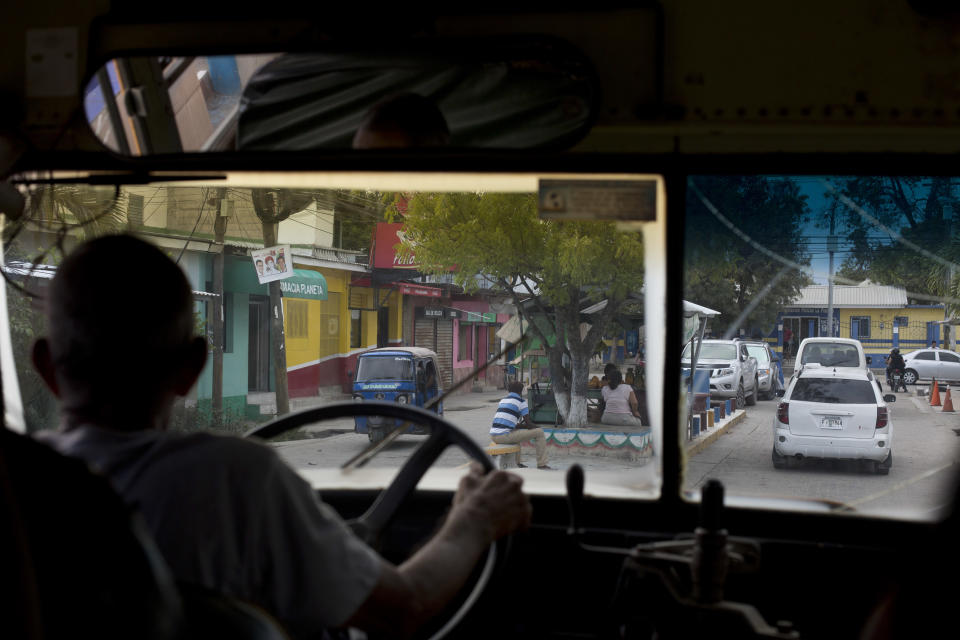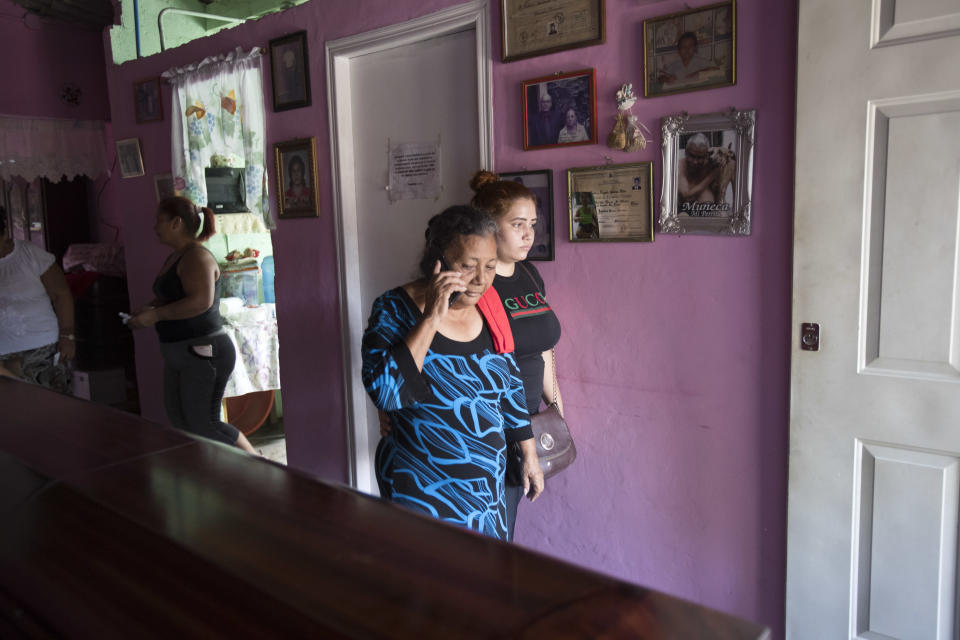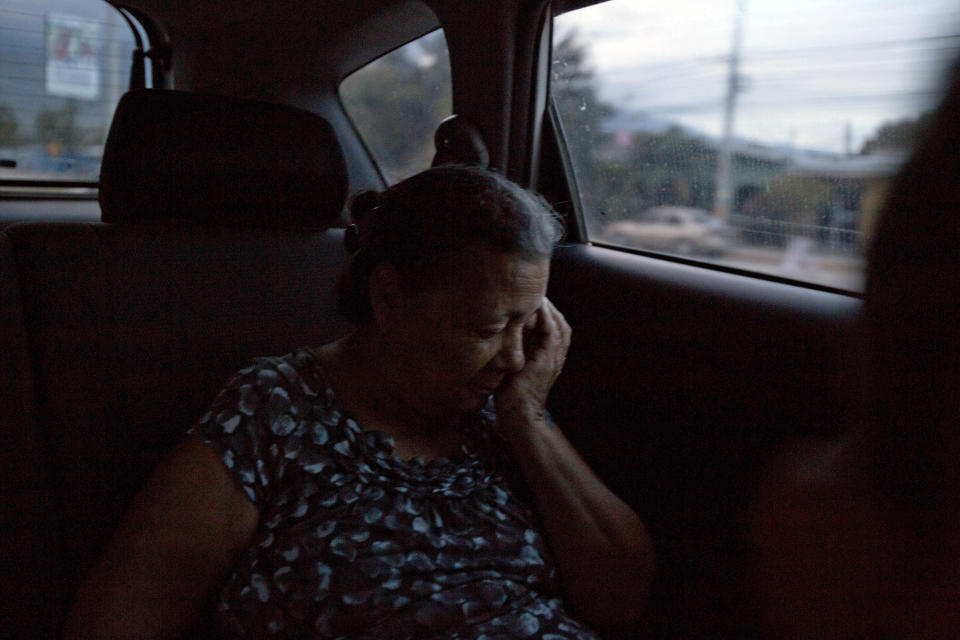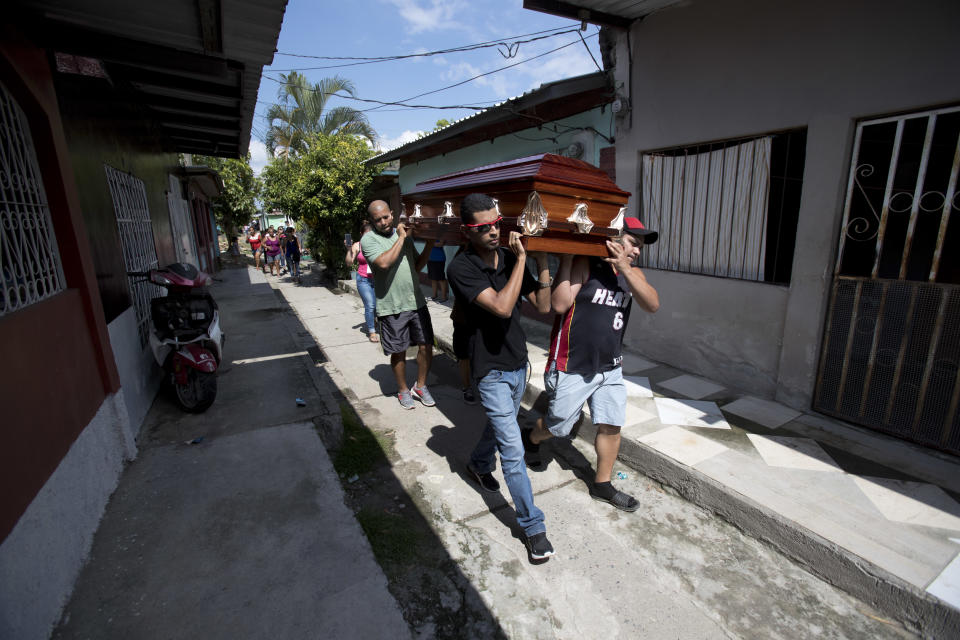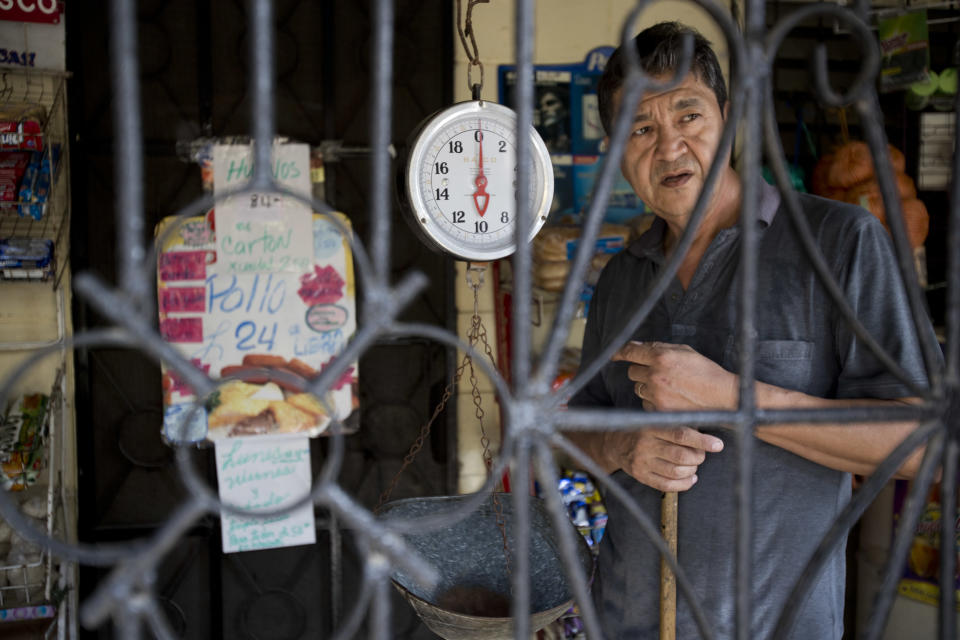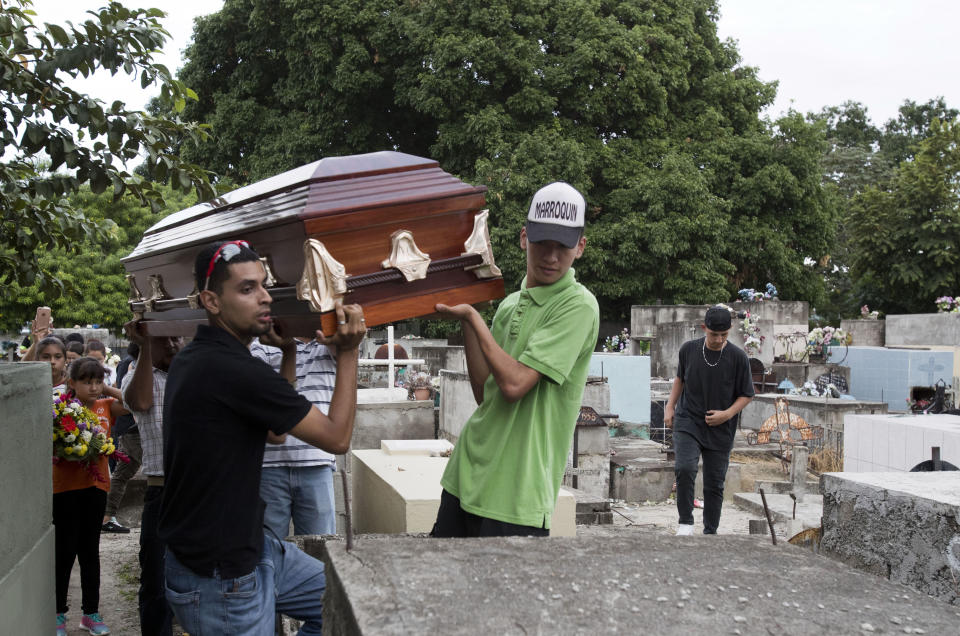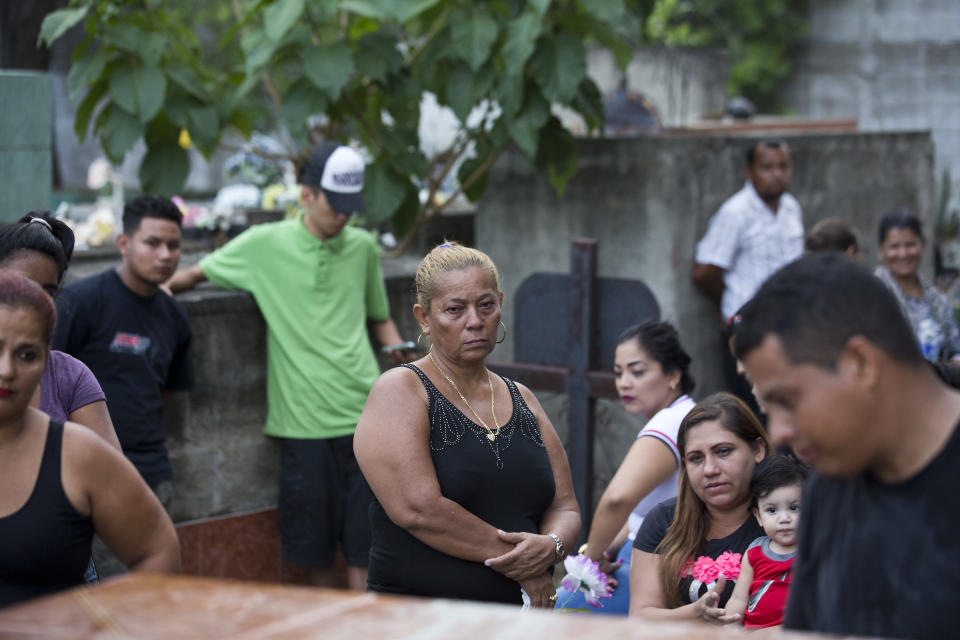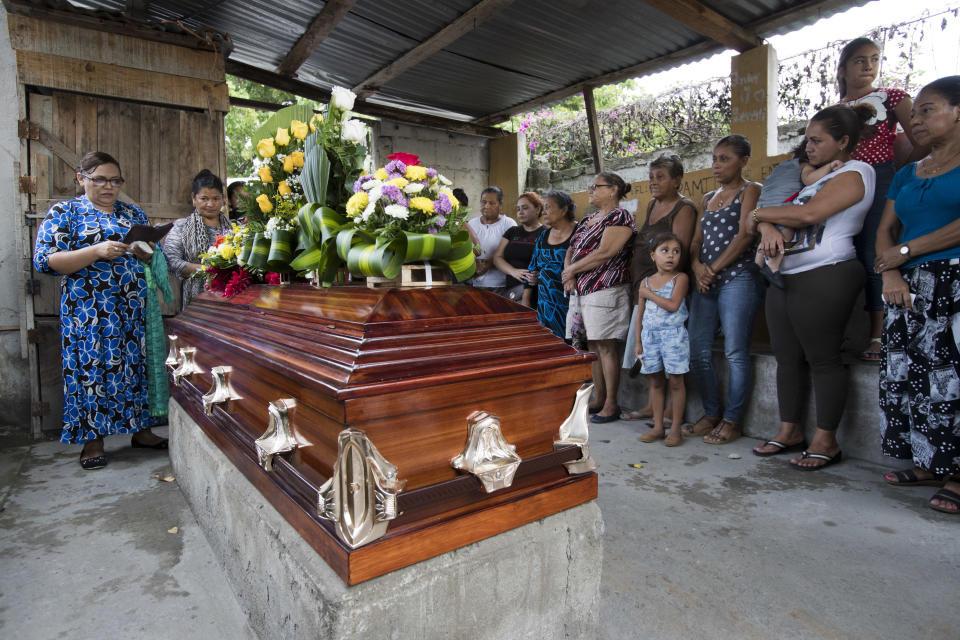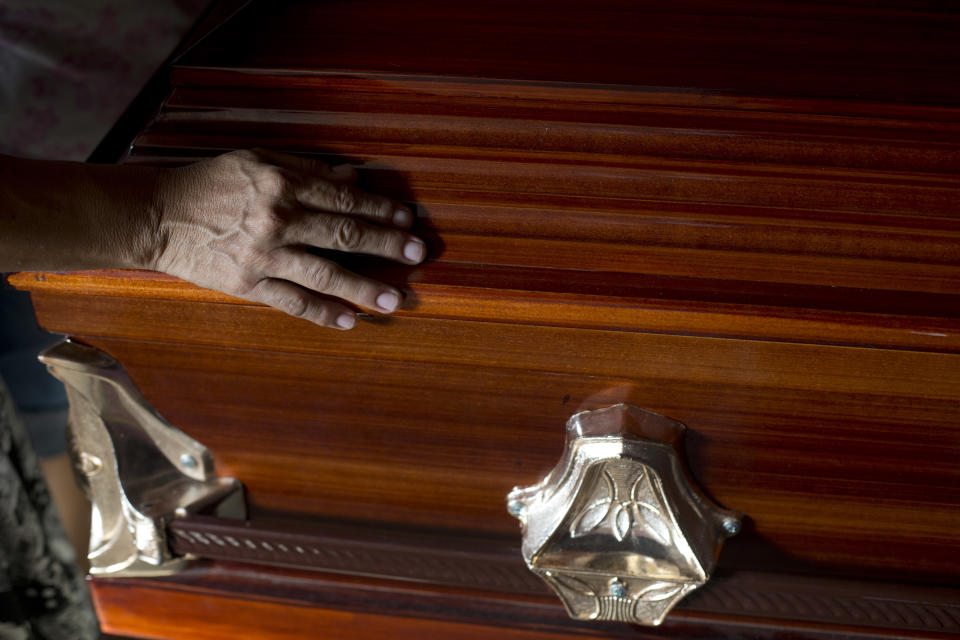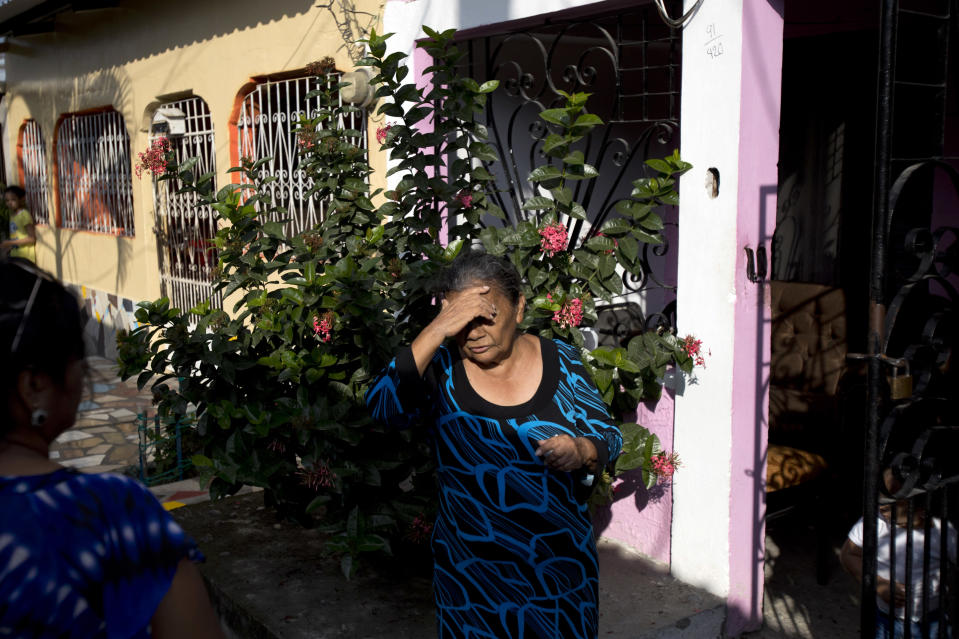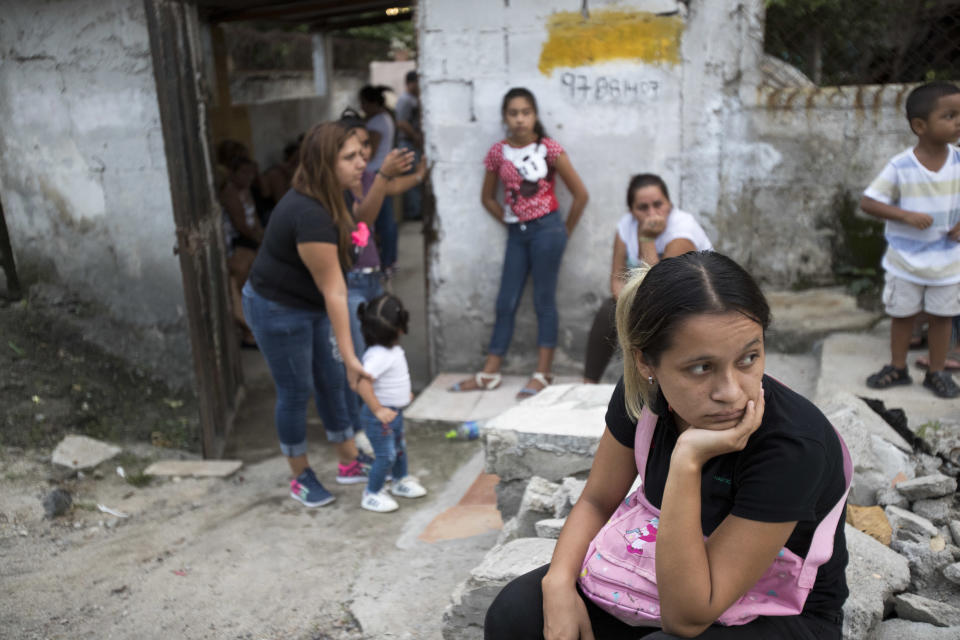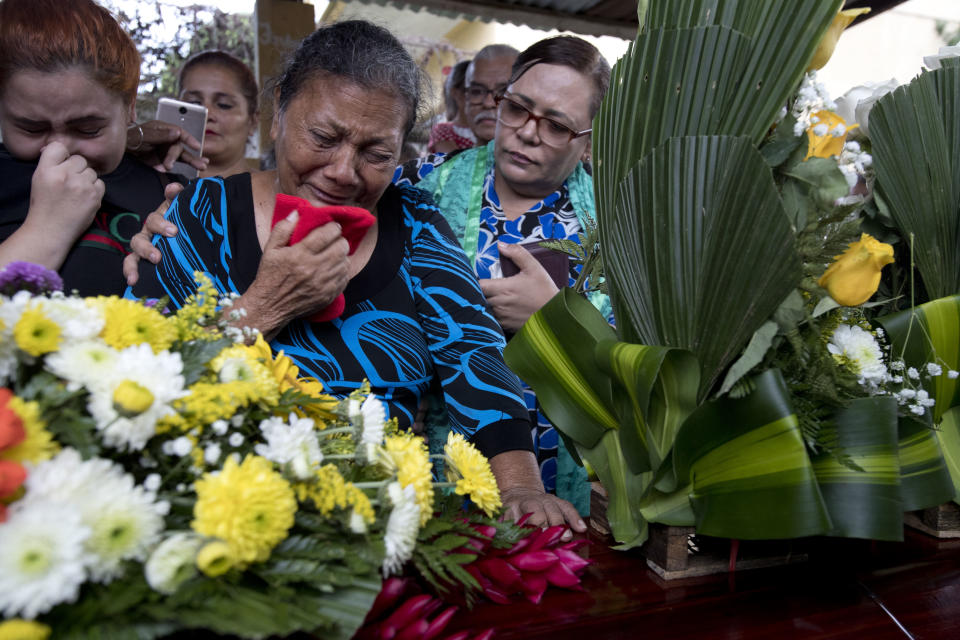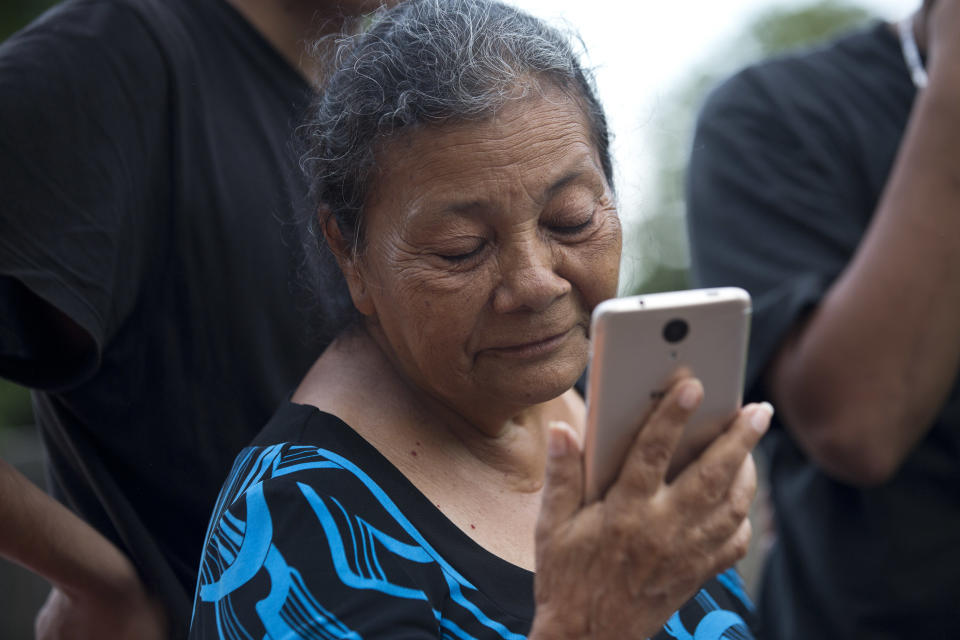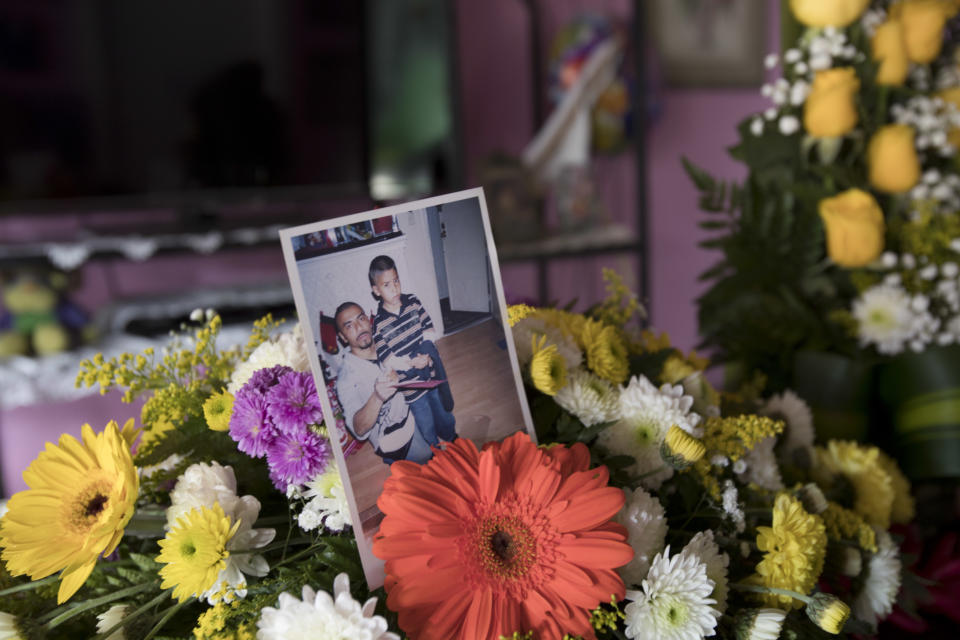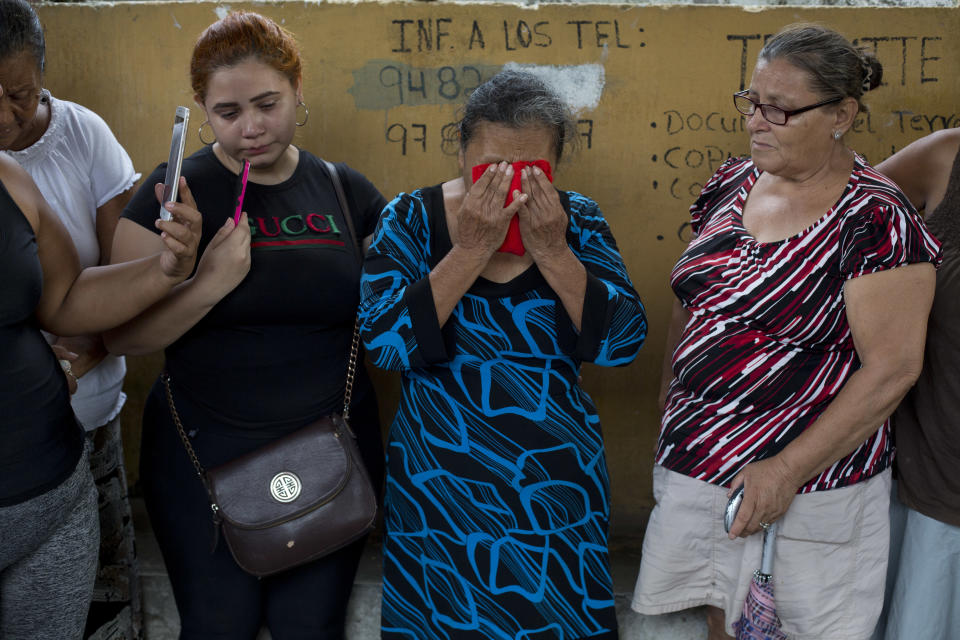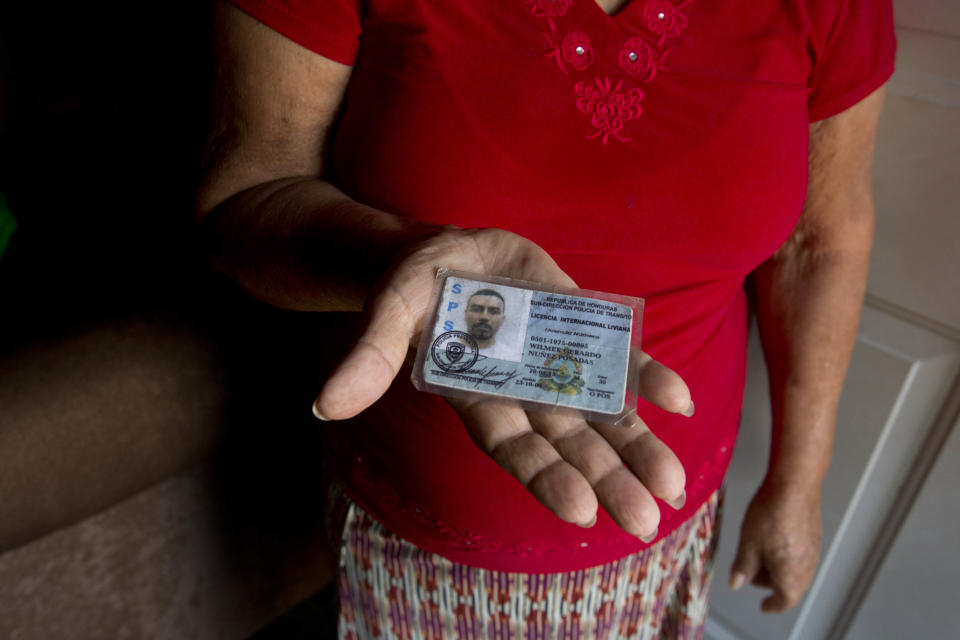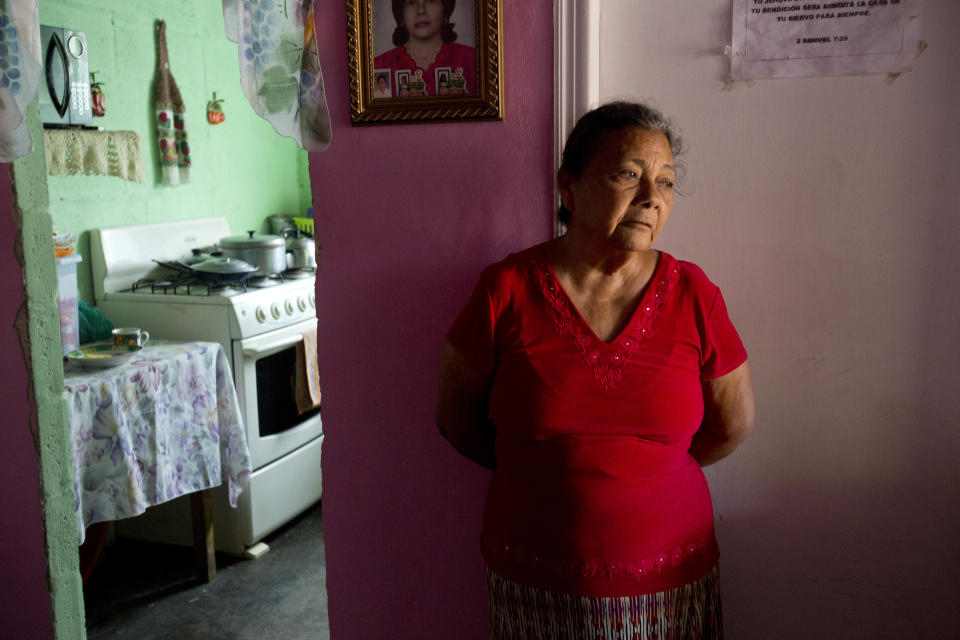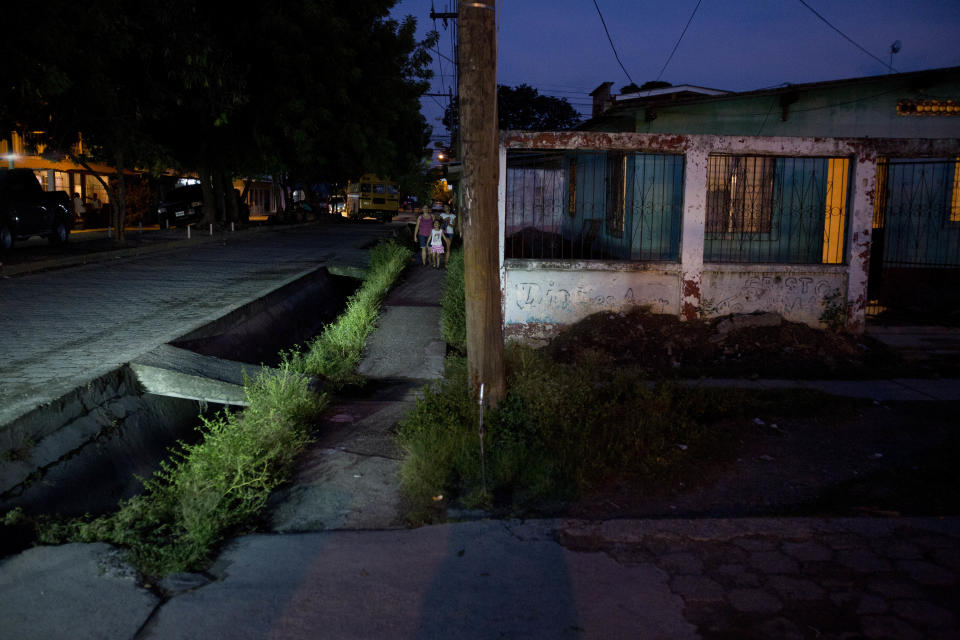Honduras mother waits 8 years for lost migrant son to return
SAN PEDRO SULA, Honduras (AP) — Haydee Posadas had waited eight years for her son to come home. On the last night of her long vigil, she was too agitated to sleep.
Her son had fled Honduras for the United States in 2010, in part because of gang threats, just as thousands are doing today in migrant caravans, including men from the same neighborhood. But en route in Mexico, again like so many others, Wilmer Nunez disappeared into the vortex of drug violence that he was trying to escape in the first place, leaving Posadas in limbo.
"I know nothing about my son, whether he's dead or alive," she pleaded with God through the years.
In the past four years alone, almost 4,000 migrants have died or gone missing along the route through Mexico to the U.S., The Associated Press has found. That's 1,573 more than the previously known number, calculated by the United Nations, and even the AP's estimate is likely low. These migrants are among about 56,800 worldwide who died or disappeared over the same period, the AP found.
When Posadas lost her factory job in the 1990s, Nunez left for the U.S. He sent money home, and called his mother almost every day. He was deported twice but returned.
In 2007, he had a child, Dachell, with a Mexican woman, Maria Esther Lozano, now 38. In July 2010, Nunez was deported a third time. This time, his Ciudad Planeta neighborhood in San Pedro Sula was so dangerous that Nunez barely went outside the home.
"He seemed very pensive," said Posadas, 73. "'I'm afraid,' he told me."
After just a few days and an apparent threat from gang members, he left earlier than planned.
"I have to get out of here now," he told Lozano, without further explanation.
Nunez, his nephew and two neighbors struck out for the Mexican border with Texas. Nunez, then 35, called Lozano every day, sometimes from the phone of the migrants' smuggler. About a week after he left Honduras, he spoke to his mother for the last time, and then a day later to Lozano.
After that, Lozano talked to the smuggler a couple of times, who told her they were still waiting to cross. Then the phone went unanswered.
At first Lozano and Posadas weren't too worried. But about two weeks after he left, when Posadas turned on the television news, fear suddenly seized her. The corpses of 72 migrants had been found on a ranch in Tamaulipas state, across the border from Texas, the report said. It turned out that they had been killed by gangs, and an Ecuadorian managed to escape and alert authorities.
"I started to weep like a crazy person. There were no names, but I was shaken," said Posadas.
A list of victims released days after the massacre included the names of Posadas' grandson and the two neighbors traveling with them. But there was no trace of Nunez.
Hoping against hope, Posadas and Lozano tried jails, detention centers and hospitals. Nothing. Lozano gave the Honduran consulate names, photos, and descriptions of Nunez's tattoos, including one of Dachell and another of the number 8. She went there every day.
Still nothing.
Then they heard that the Ecuadorian survivor said another man — a Honduran — also had escaped the massacre. But authorities refused to give Lozano any more information because the man was under protection.
Lozano even hired a lawyer to help relatives search prisons in Tamaulipas. The lawyer said he saw a man resembling Nunez in one of the prisons. Posadas asked herself, "Has God heard my pleas?"
But they heard nothing more, and Lozano's brothers abandoned the search because of gang threats.
Posadas spent nights awake, and days were just as desperate.
"I felt like I was falling into a terrible depression," she said.
Had she only known it, Posadas could have gotten her answer days after the mass killing.
The report on the massacre stated that body No. 63 was a male with tattoos, including "Dachell" and the number 8. Documents note the finding of a Honduran driver's license in the name of Wilmer Gerardo Nunez Posadas, with a photo of a man with a moustache and beard. Yet nobody made that information public.
In September 2013, the Argentine Forensic Anthropology Team reached an agreement with Mexican prosecutors to identify more than 200 bodies from three massacres, including the one at San Fernando. When the Argentine team found out about Nunez's ID, they tried to track down the family, but nobody wanted to set foot in Planeta.
Through the Catholic Church, they found a woman who knew a taxi driver who lived in Planeta. He offered to leave a scrap of paper with a phone number that Posadas could call in one of the neighborhood's oldest stores.
A neighbor brought the message to Posadas late last year. Befuddled, she called the number. The voice on the other end wanted to meet to talk about her son.
"Today I finally have hope," she thought.
When they met, the forensic experts told her about the driver's license and the tattoos. They arranged for DNA tests for her and Wilmer Turcios Sarmiento, 18, thought to be Nunez's son from a teenage relationship.
The DNA tests came back positive.
"My heart hurt so much ... most of all because of the death he suffered, not even knowing who killed him, with his eyes blindfolded, hands tied..." Posadas said, her voice trailing off, tears in her eyes.
The DNA tests also proved once and for all that Turcios was Nunez's son, Posadas' grandson.
On Oct. 31, Wilmer Nunez came home to Honduras.
A forensic worker unwrapped the cadaver. By now the head was just a skull, but on the arms some skin remained, along with tattoos. Posadas didn't need to see any more. After a brief wake at home, the family went to a small cemetery.
"I am finally sure. It is him. It is him. I give thanks to God," Posadas sobbed before collapsing next to the coffin.
Eight years and three months after the last hug from her son, Posadas says she feels peace for the first time.
In her prayers now, she asks for her grandson, who wants to go to the U.S., not to migrate.
